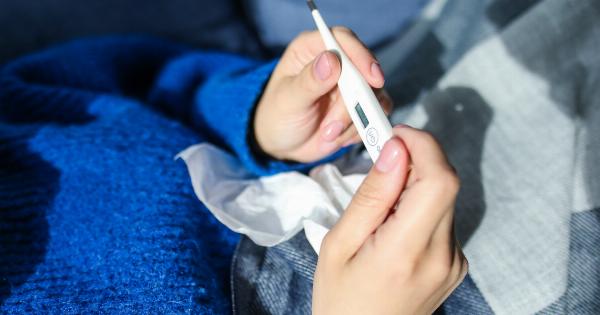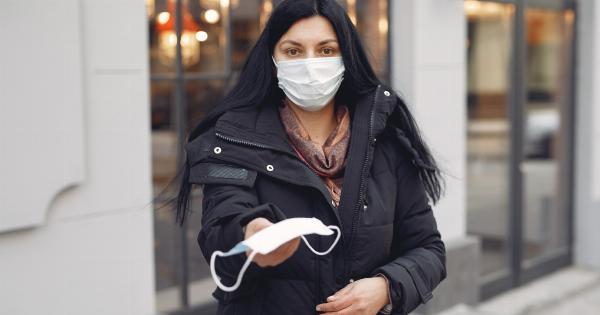When it comes to HIV transmission, there are numerous misconceptions that persist even today. One of the most common misunderstandings is the belief that HIV can be easily transmitted through saliva.
However, it is important to understand the realities of saliva transmission and its connection to HIV. In this article, we will explore the facts and debunk the myths surrounding saliva transmission and HIV.
1. The Myth: HIV is Present in Saliva
One of the prevalent misconceptions is that HIV can be found in saliva, making transmission a possibility through activities such as kissing or sharing food and drinks. However, this is far from the truth.
While HIV can be found in various bodily fluids like blood, semen, vaginal fluids, and breast milk, it is present in very low quantities, if at all, in saliva.
2. The Reality: Extremely Low Levels of HIV in Saliva
Research has revealed that the concentration of HIV in saliva is extremely low, making it virtually impossible to transmit the virus through casual contact.
Studies have consistently shown that the amount of HIV in saliva is significantly lower than in other bodily fluids. Therefore, even activities involving exchange of saliva, such as deep kissing or sharing utensils, do not pose a risk of HIV transmission.
3. The Myth: Saliva Contact Can Transmit HIV
There is a common belief that if someone with HIV has an open cut or sore in their mouth, the virus can be transmitted through their saliva. However, this is a misconception.
HIV transmission occurs when specific fluids, such as blood, semen, vaginal fluids, or breast milk, containing the virus come into direct contact with the bloodstream of an individual.
4. The Reality: Saliva Lacks Efficient Pathways for Transmission
The lining of the mouth, including the tongue and gums, acts as a protective barrier against HIV transmission. The virus cannot easily penetrate these tissues, rendering the transmission of HIV through saliva highly unlikely.
Even if an open cut or sore is present in the mouth, the concentration of the virus in saliva is too low to cause infection.
5. The Myth: HIV in Saliva Can Remain Infectious Outside the Body
Another misconception is the belief that HIV in saliva can survive outside the body and remain infectious for prolonged periods. In reality, HIV becomes non-infectious quickly after exposure to the air.
Once exposed to oxygen, the virus breaks down rapidly, becoming unable to cause infection. This means that contact with dried saliva does not pose any risk of HIV transmission.
6. The Reality: Conditions for HIV Transmission
HIV transmission requires specific conditions to be met.
The virus must come into direct contact with the bloodstream, typically through activities such as unprotected sexual intercourse, sharing needles, or mother-to-child transmission during childbirth or breastfeeding. Saliva does not provide the necessary conditions for HIV transmission, even if an individual has an open cut or sore.
7. The Myth: Saliva Testing for HIV Diagnosis
It is important to note that saliva testing for HIV is different from saliva transmission of the virus. Saliva-based tests, also known as oral fluid tests, are used for the detection of HIV antibodies.
These tests are designed to detect HIV antibodies in oral fluids, providing an alternative to blood tests. However, the tests do not rely on the presence of HIV itself in saliva, as the concentration is too low to be accurately detected.
8. The Reality: HIV Testing Methods
The standard diagnostic methods for HIV involve blood tests, which can detect the presence of HIV in the bloodstream. These tests are highly accurate and reliable.
While saliva-based tests are available, they primarily rely on identifying HIV antibodies in oral fluids rather than the direct presence of the virus.
9. The Myth: Saliva Transmission Risk for Healthcare Workers
There is a common concern regarding the risk of HIV transmission to healthcare workers through exposure to saliva during medical procedures.
However, it is crucial to understand that healthcare settings follow strict infection control measures to prevent any transmission of HIV or other bloodborne pathogens. The use of protective barriers, such as gloves, masks, and goggles, significantly reduces the risk of transmission from saliva or any other bodily fluid.
10. The Reality: Universal Precautions
Healthcare workers around the world adhere to universal precautions to prevent the transmission of HIV and other bloodborne diseases.
These precautions include hand hygiene, proper use of personal protective equipment, safe handling and disposal of sharps, and adherence to sterile techniques during invasive procedures. With these measures in place, the risk of saliva transmission of HIV in healthcare settings is minimal.






























